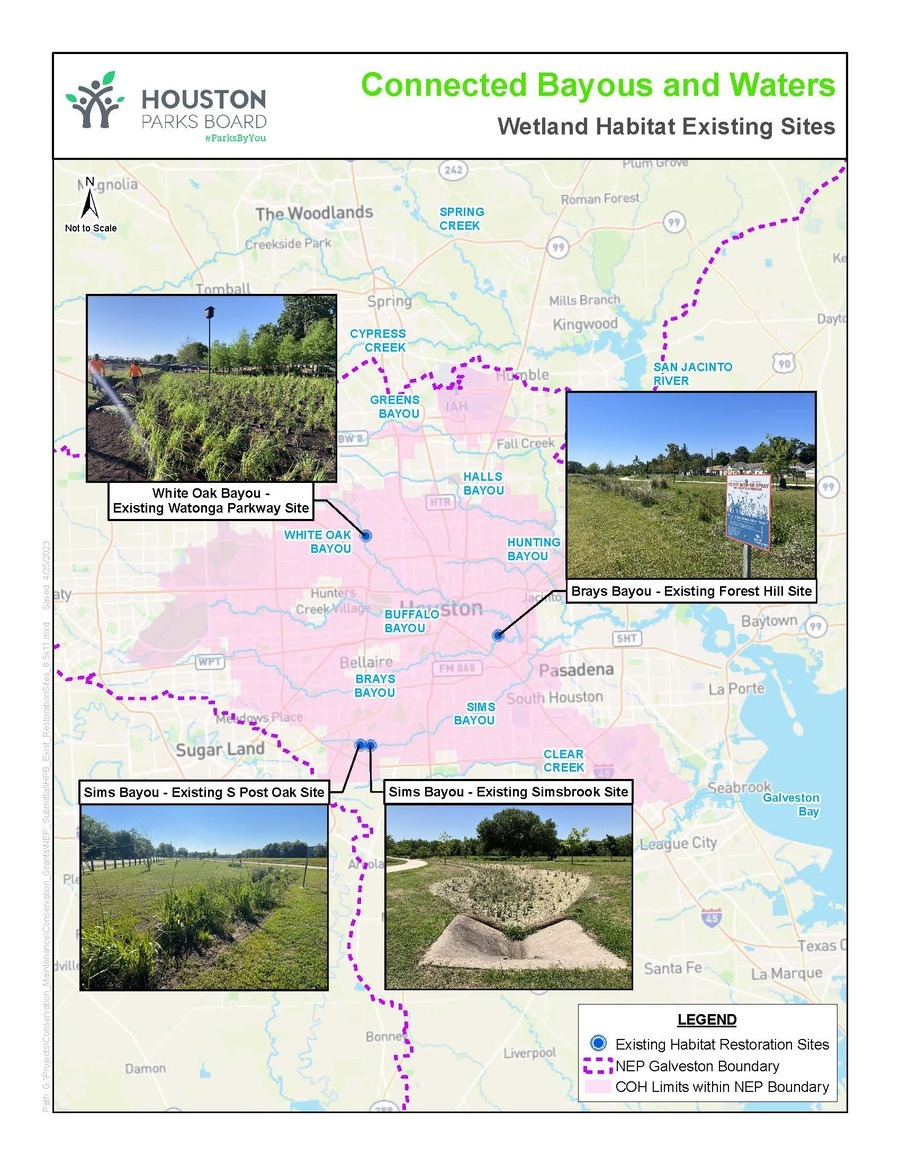PUBLISHED: April 2024 By HPB Conservation Manager, Marissa Llosa
In today’s world, the pressing need to combat pollution and enhance urban environments has never been more evident. As cities grapple with the challenges of pollution and stormwater management, innovative solutions are emerging to address these issues effectively. One such solution gaining attention is the implementation of wet swales.
Wet swales, natural mechanisms designed to reduce pollution and improve water quality in urban areas, have become a focal point in the quest for sustainable urban development. Through extensive discussions and collaborative efforts, the significance of wet swales as effective management practices has become increasingly apparent.
One notable initiative showcasing the potential of wet swales is the recent grant awarded to Houston Parks Board by the Restore America’s Estuaries program. This grant has paved the way for a project involving the creation of eight wet swales, or “interceptors,” along Bayou Greenways, strategically located to manage stormwater runoff and provide habitats for local flora and fauna.

What sets these wet swales apart is their resilience and multifunctionality. Despite their modest size, they play a crucial role in mitigating the impacts of extreme weather events, such as heavy rainfall and droughts. Additionally, they serve as sanctuaries for pollinators and wildlife, and offer opportunities for community engagement and appreciation of nature.
Situated adjacent to existing Bayou Greenway trails and in low-lying areas, these wet swales not only enhance accessibility but also serve as living examples of nature-based solutions in action. By demonstrating the coexistence of functional landscapes and aesthetic appeal, they inspire similar initiatives in other urban areas facing similar challenges.

For our organization, this project represents a significant milestone in our ongoing efforts to promote sustainable urban development. Building upon past successes, such as the retrofitting of a swale at Forest Hill in October 2021, this endeavor signifies a leap forward in our commitment to creating greener, more resilient cities.
Ultimately, the goal of implementing wet swales goes beyond pollution reduction; it encompasses the broader vision of creating vibrant greenspaces that enhance the quality of life for urban residents. By investing in nature-based solutions like wet swales, we are laying the groundwork for a more sustainable and resilient future for our communities.
As we continue to explore innovative approaches to urban development, the role of wet swales stands out as a beacon of hope for creating healthier, more livable cities. Through collaboration, education, and proactive engagement, we can harness the power of nature to build a better tomorrow for generations to come.
